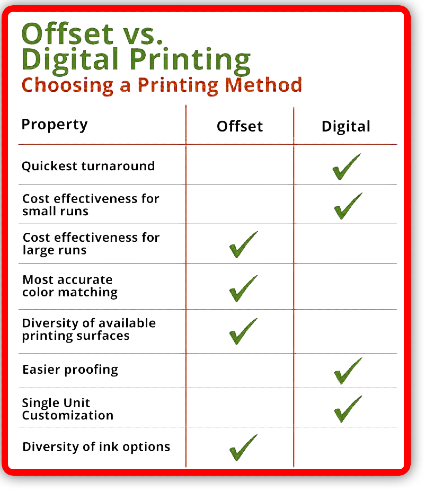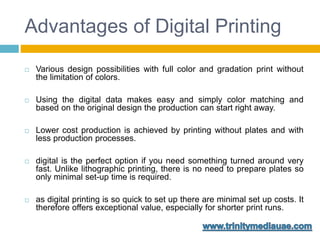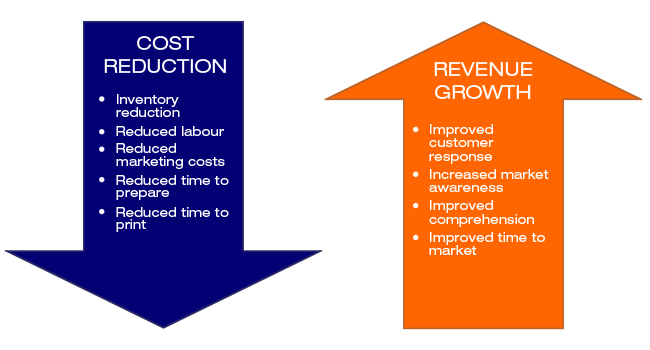What Does Digital Printing Do?
What Does Digital Printing Do?
Blog Article
Indicators on Digital Printing You Should Know
Table of ContentsThe Best Guide To Digital PrintingThe Only Guide to Digital Printing6 Easy Facts About Digital Printing DescribedSome Known Questions About Digital Printing.All about Digital PrintingDigital Printing Can Be Fun For Everyone
Variable data printing, such as direct mail with personalized codes and addresses, is preferably suited for electronic printing. Digital quick printing only requires four actions of layout, review, printing and binding to obtain everything done. Digital quick printing has an unparalleled benefit: print on demand.According to PMMI, electronic printing permits brands and producers to react swiftly to consumer demands while improving the supply chain, decreasing warehousing expense and waste, and delighting in faster time to market. That all noises wonderful, but how does this innovation do all that? The significant differentiator of these modern technologies is that there are no set-up fees and no plates with digital printing.
Some Known Questions About Digital Printing.
According to Wikipedia, the best distinction in between electronic printing and standard approaches such as lithography, flexography, gravure, or letterpress - Digital Printing is that there is no demand to replace printing plates in electronic printing, whereas in these analog printing approaches home plates are continuously changed. This results in quicker turn-around time and decreases price when making use of electronic printing.
Rapid manufacturing implies getting your product to market faster. It additionally indicates it's much easier and faster to make modifications later on, when you transform a recipe, include a SKU, or develop seasonal packaging. Digital printing is very flexible, so it's simple to make adjustments to the plan design swiftly. All of it goes back to home plates.
With traditional printing approaches, short-run printing is just not feasible. Since a terrific design can make or damage your product, digital printing constantly creates top quality, clear and colorful graphics each time.
Digital printing is the procedure of printing digital-based pictures directly onto a range of media substratums. There is no need for a printing plate, unlike with countered printing. Digital documents such as PDFs or desktop publishing data can be sent directly to the digital printing press to print theoretically, image paper, canvas, textile, synthetics, cardstock and other substrates.
The Only Guide for Digital Printing
According to PMMI, digital printing enables brand names and manufacturers to respond promptly to customer demands while boosting the supply chain, decreasing warehousing price and waste, and taking pleasure in faster time to market. That all audios terrific, but exactly how does this technology do all that? The major differentiator of these innovations is that there are no set up costs and no plates with electronic printing.
According to Wikipedia, the biggest distinction in between electronic printing and traditional methods such as lithography, flexography, gravure, or letterpress is that there is no need to replace printing plates in electronic printing, whereas in these analog printing techniques the plates are consistently replaced. This causes quicker turn-around time and reduces cost when making use of digital printing.

Digital Printing - The Facts
A lot more stock can imply even more waste in the future. With conventional printing methods, short-run printing is just not possible. Since an excellent layout can make or break your item, digital printing continually produces high-quality, clear and vibrant graphics each time. Digital click over here now printing on adaptable pouches includes the intense, dynamic, and specific graphics that practically bid customers to connect and touch them.

According to PMMI, electronic printing allows brands and suppliers to respond promptly to customer needs while boosting the supply chain, decreasing warehousing price and waste, and delighting in faster time to market. That all audios fantastic, however how does this innovation do all that? The significant differentiator of these technologies is that there are no set-up costs and no plates with digital printing.
Some Known Questions About Digital Printing.
This results in quicker turnaround time and decreases price Related Site when utilizing digital printing.
Fast production indicates obtaining your product to market faster. It also means it's easier and faster to make changes later, when you transform a dish, add a SKU, or create seasonal packaging. Digital printing is very adaptable, so it's very easy to make modifications to the bundle design promptly. All of it returns to the plates.

The Main Principles Of Digital Printing
Digital printing is the procedure of printing digital-based images straight onto a variety of media substratums. There is no need for a printing plate, unlike with countered printing. Digital files such as PDFs or desktop computer publishing data can be sent straight to the electronic printing press to publish on paper, picture paper, canvas, fabric, synthetics, cardstock and other substratums.
Report this page